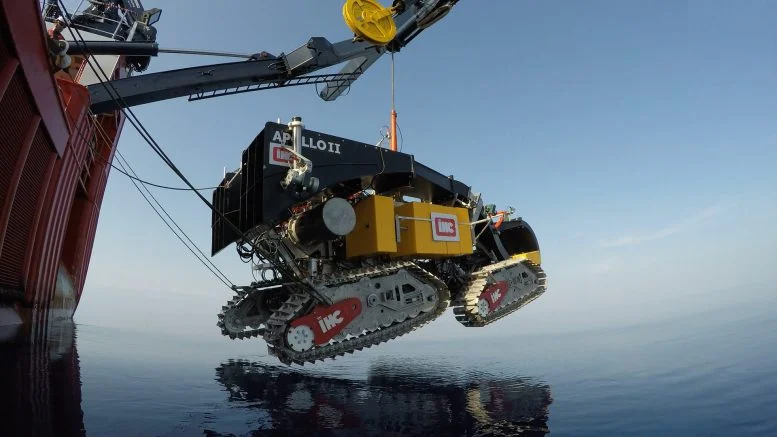A new study suggests that deep-sea mining often creates dust clouds that settle quickly but can remain visible over long distances, possibly affecting deep-sea life. More research is needed to understand the potential consequences resulting from the clear and nutrient-deficient nature of these waters.
Deep-sea bottom “dust clouds” created by deep-sea mining usually descend for short distances. This is evidenced by NIOZ marine geologist Sabina Haalboom’s research at the bottom of the Pacific Ocean. However, a small portion of the disturbed bottom material can be seen from a great distance in the water. “These waters are often crystal clear, so deep-sea mining can have a really big impact on deep-sea life,” Haalbom says in his thesis, which he will defend at Utrecht University on May 31.
Unidentified living organisms among manganese nodules
Currently, the international community is still discussing the possibilities and conditions of extracting precious metals from the bottom of the deep sea. This so-called deep-sea mining can occur at depths where little is known about underwater life. The main concern, among other things, is the silt at the bottom of the sea depths, which will be disturbed, for example, during the mining of manganese nodules. Since life in the deep sea is largely unknown, turbidity of the water will certainly lead to completely unknown effects.
Various tools
For his research, Haalbom experimented with various devices to measure the number and size of particles suspended in water. Haalboom took measurements with these instruments at the bottom of the Clarion Clipperton Zone, a large area deep in the Pacific Ocean, before and after a 500-kilogram network of steel chains was dragged along the bottom.
It’s been cloudy for a long time
“The first thing you notice when you measure in this area is how clear the natural water is,” says Haalbom. “After dragging the chains back and forth over a 500-meter section, the vast majority of the mixed material settled only a few hundred meters away. However, we also found that a small amount of degraded bottom material was still visible hundreds of meters from the test site and up to many meters above the bottom. The water is far from the test site “It was much blurrier than usual at distances.”
In a later study in which doctoral candidate Haalbom did not participate, “dust clouds” were visible even at a distance of up to five kilometers from the test site.
Missing food in clean water
International companies vying for concessions to extract scarce metals from the seabed are using the results of these early tests as a sign of the low impact of deep-sea mining on seafloor life. But NIOZ oceanographer Henko de Stigter, one of the initiators of Haalboom’s research, says this is unfair. “Of course, based on this PhD research and further research, we know that the vast majority of dust settles quickly. But if you take into account how clean these waters generally are and the dependence of deep-sea life on very scarce food in the water, the latter could have a big impact.”
It’s too early to decide
Both Haalbom and De Stigter call for more research before definitive statements can be made about the effects of deep-sea mining. “At the moment, it is too early to say how harmful or harmless the last bit of dust that can spread over such long distances is,” De Stigter emphasizes.













